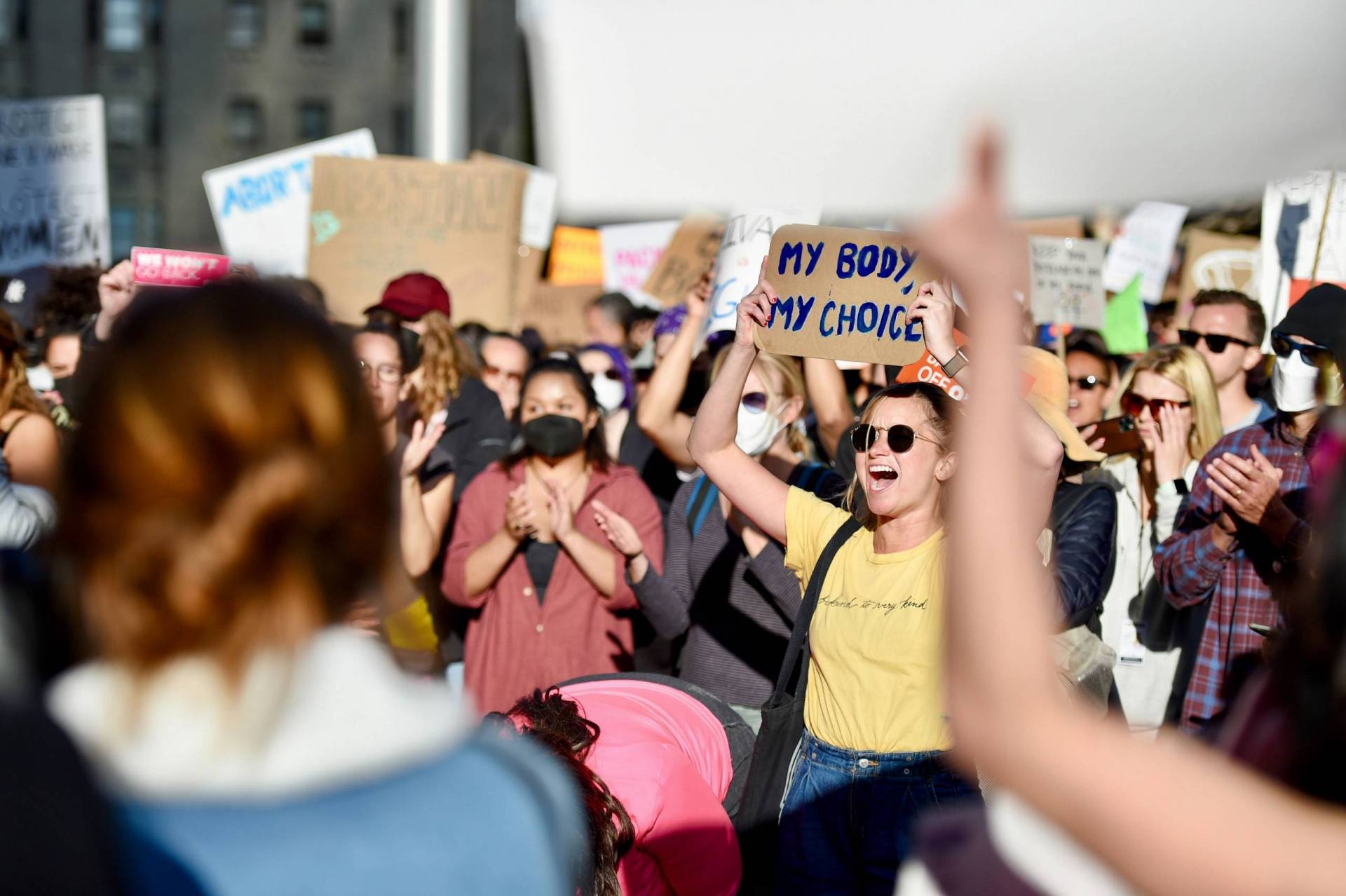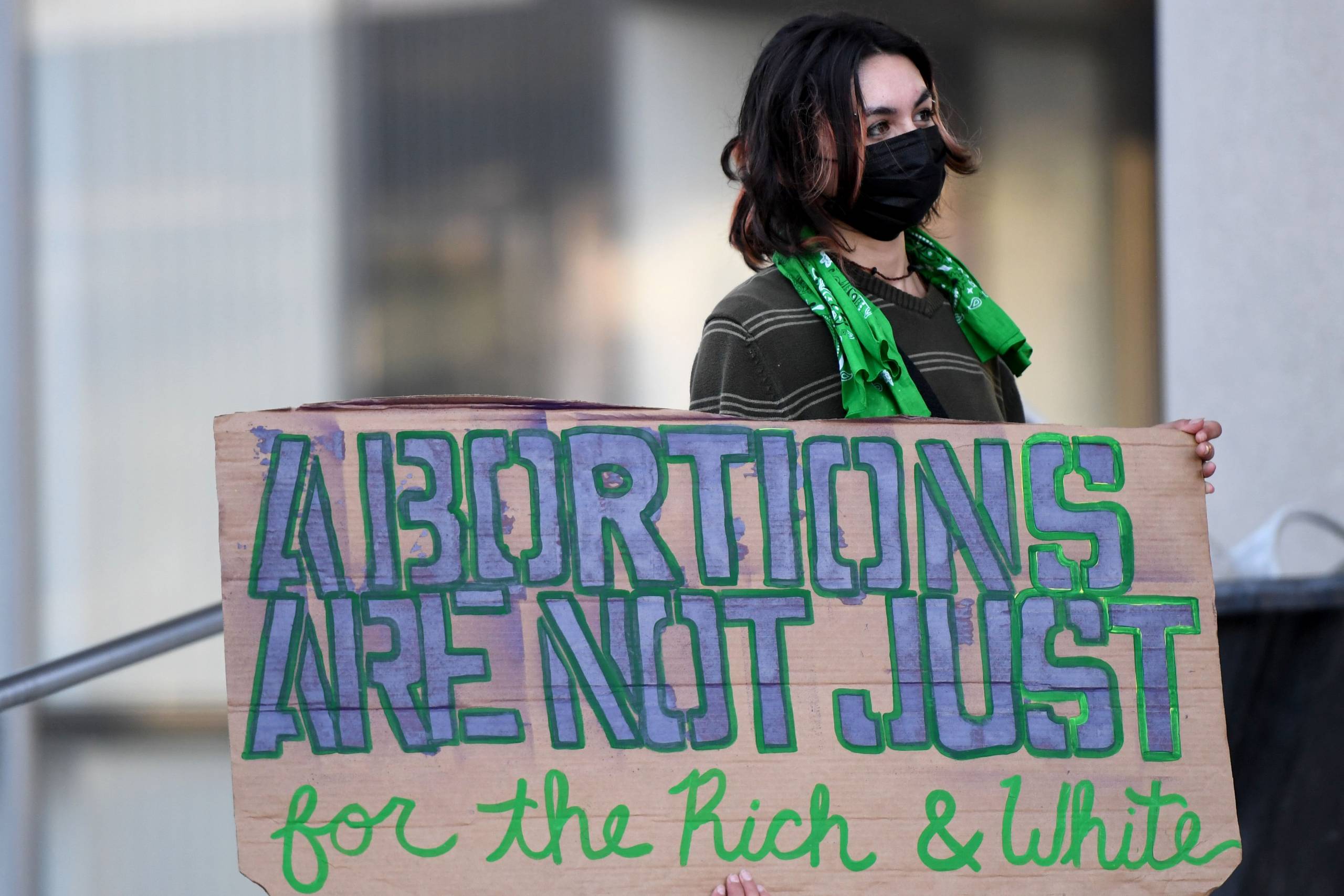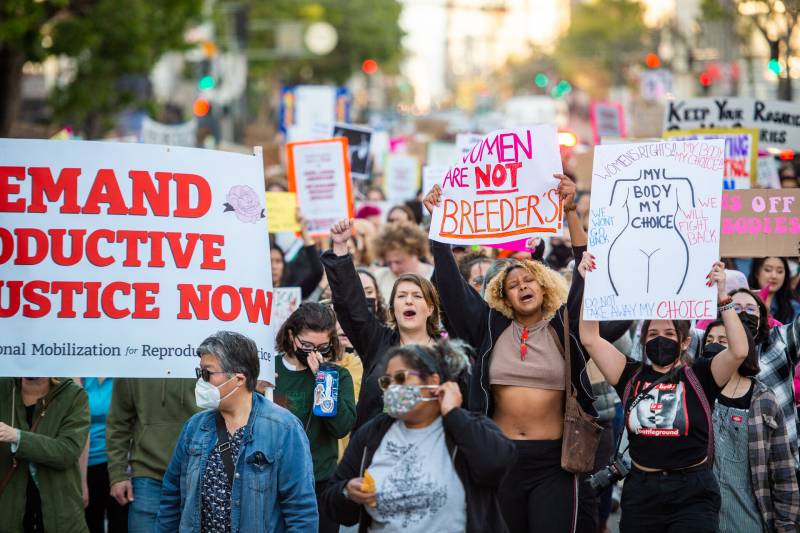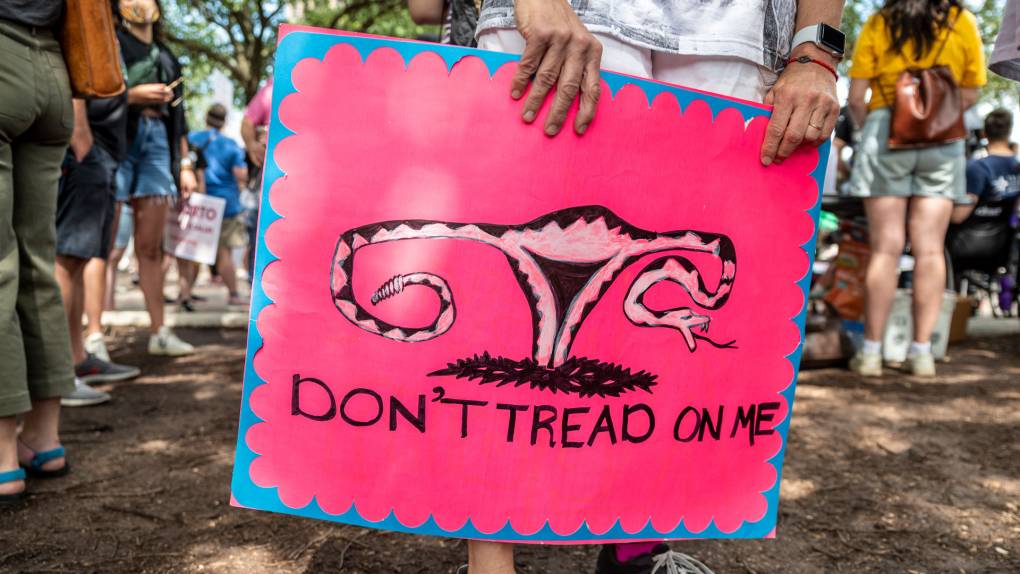Many across the country awaited this outcome with a mix of fear, anger and disappointment, ever since a Supreme Court draft opinion in the case of Dobbs v. Jackson Women’s Health Organization was leaked in May. Individual states now have the power to ban any and all abortion procedures.
You may be worrying about what will happen here in California — or perhaps you’re unclear on what our state’s abortion laws already are.
Read on for what you need to know about abortion in California, including when someone can get an abortion, what kind of abortions are available and what resources are available for people without insurance or those who live far away from abortion clinics. We’ll keep updating this post as we get more information.
Can’t find an answer to something you’re concerned about? Send us your question here. Here’s a quick breakdown of the guide. Click on the links below to skip to a specific section:
- What are California’s abortion laws right now?
- Do insurance companies cover the cost of an abortion?
- What options exist for people without insurance?
- Is there help available for people who live far away from an abortion provider?
- What kinds of abortions are available in California?
- What can I do to take action in support of abortion access around the United States?
What are California’s abortion laws right now?
California guarantees the right to abortion in statute and the state constitution. Our state’s abortion laws are the strongest in the United States.
California lawmakers also are working to enshrine the right to an abortion and to use or refuse contraceptives. Both officials and abortion providers have made it very clear that abortion access in California will not change because of the U.S. Supreme Court’s decision in Dobbs v. Jackson Women’s Health Organization.
Here’s what to know about current abortion laws in California:
You can get an abortion in California, for any reason, until roughly six months after conception
A pregnant person of any age can seek an abortion for any reason at any time until the point where the fetus could survive outside the womb – known as “viability.”
This point where a fetus is considered viable is roughly at the six-month mark of pregnancy. Some doctors may alternatively assess that cutoff for viability by how much a fetus weighs.
As CalMatters writes, exactly how that threshold gets decided is “up to a physician’s ‘good faith medical judgement’ — in practicality, most doctors consider a fetus viable at 24 weeks or once a fetus weighs 500 grams.”
In California, there are no enforced waiting periods between requesting an abortion and getting one.
After six months of pregnancy, you can only get an abortion in certain circumstances
After a fetus has reached the time or weight threshold of viability, an abortion is only possible if continuing the pregnancy threatens the pregnant person’s life or health.
If you’re under 18, you don’t need your parents’ permission to get an abortion in California
Minors don’t require parental consent to get an abortion in the state. This means that even if your parents don’t want you to get an abortion, you can legally go against their wishes and get one.

If you have insurance, California requires your providers to cover abortion
The state requires private health insurance, including Covered California (aka “Obamacare”) plans, to cover abortions. This doesn’t mean getting an abortion with insurance is always free: Providers can charge co-pays and deductibles that can create out-of-pocket costs. According to the California Health Benefits Review Program, the current average out-of-pocket cost of a medication abortion is $306, which jumps to $887 for a procedural abortion.
For people with Medi-Cal, state funds are used to cover the costs of the procedure to guarantee this population free access to abortion.
Starting in 2023, abortion and all related services in California (like consultations and follow-up care) will be free, thanks to a law signed by Gov. Gavin Newsom in March 2022.
If you are uninsured, there are options for finding a free or low-cost abortion
California’s Presumptive Eligibility for Pregnant Women (PE4PW) program offers temporary Medi-Cal coverage for outpatient prenatal services (which could include pregnancy-related services that don’t need you to stay in the hospital overnight) for lower-income California residents who are pregnant.
To access this program, you’ll need to visit a qualified provider, or QP (a Medi-Cal provider who’s enrolled in PE4PW and who provides prenatal care). Find a qualified provider (QP) near you and contact them let them know you’d like to be enrolled in PE4PW. If you’re eligible for the program, that QP can enroll you online.
You can also find information about accessing funds for an abortion or abortion-related costs like transportation, lodging and child care with the National Network of Abortion Funds.

Help also is available if you live somewhere in California without abortion providers
Just because abortion is legal under California law doesn’t mean it’s simple for everyone in California to access an abortion. Many people in California — especially in rural or lower-income areas — still face barriers to accessing an abortion because of a lack of nearby providers and clinics. In a 2017 study, the Guttmacher Institute reported that some 40% of mostly rural counties in California had zero clinics that provided abortions.
There’s also the issue of prohibitive costs — not just for the procedure, but also extra travel needed to reach a provider — and anti-abortion sentiment in some areas. All of this can make it even harder for people in rural communities to find the abortion they need.
If you’re in this position, there are California resources you can consult for practical and financial assistance to find an abortion, including:
Nationally, you can also find information about accessing funds for an abortion or abortion-related costs like transportation and lodging from the National Network of Abortion Funds.
What kinds of abortions are available in California?
What kind of abortion you can get — whether that’s medication to induce abortion or a surgical procedure — depends on how long you’ve been pregnant.
In the first trimester (0-13 weeks), the types of abortion you can access are:
- Medication abortion (also known as the “abortion pill”)
- Vacuum aspiration (also known as surgical abortion)
In the second trimester (14-26 weeks), the types of abortion you can access are:
- Dilation and evacuation (usually under general anesthetic)
An abortion in the third trimester (27-40 weeks) can only be performed if the life or health of the pregnant person is threatened.
What does this Supreme Court decision mean for other states?
Individual states now have the power to ban any and all abortion procedures.
More than 20 states have laws that could restrict or ban abortion now that the Supreme Court has overturned Roe, according to the Guttmacher Institute, a research group that supports abortion rights.
Communities of color and queer people in those states — specifically transgender people — would be especially affected if Roe v. Wade is revoked, advocates say. According to The Associated Press, in conservative states that already limit access to abortions, Black and Latina women have abortions at higher rates than white women. Women of color who have low incomes could have a harder time traveling out of state for an abortion, the AP said.
What is California planning to do to help people seeking abortions in places where it’s now restricted or banned?
California is already preparing to be a haven for abortion access for people elsewhere in the U.S.
Abortion clinics are building new facilities closer to transit hubs and training more staff. A number of bills addressing abortion rights are aiming to expand the number of providers and amount of financial assistance available to out-of-state patients traveling to California for an abortion, and to legally protect the medical personnel who treat them. Read more about what California is planning to do to offer abortion access to people denied it in their home states.
What can I do to take action in support of abortion access around the United States?
Read more about where to donate in support of abortion rights, and how to support organizations on the ground, with this guide from KQED Arts and Culture.
If you’re planning to attend a protest or a rally in support of abortion rights, remember we’re still in a pandemic, and protecting your personal health and safety is important while you march in support of the health of others. Read our guide to staying safe during a protest, from COVID concerns to possible police violence. If you find yourself in a situation where you feel compelled to record an encounter with police during a protest, we have tips on how to do so safely and ethically.


